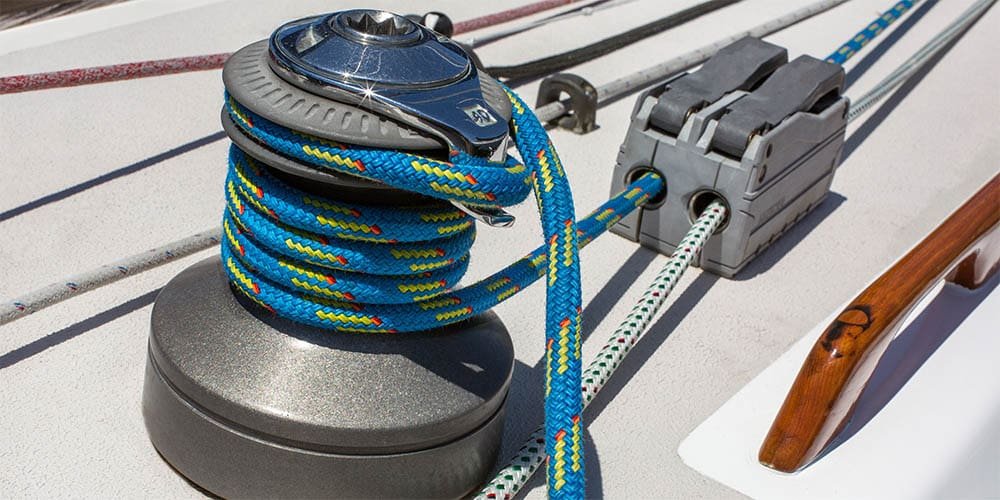A buzz in the adventure community. But are they worth the hype? Strap in as we embark on an exhilarating journey through the realm of traveller winches, uncovering their prowess, versatility, and undeniable benefits.
Traveller winches are like strong machines that help people pull heavy things. They’re often put on cars or boats. The main job of traveller winches is to make it easier to move big stuff, like when a car gets stuck in mud or a pulls something heavy.
So, gear up, unleash the potential of traveller winches, and let the thrill of discovery propel you to new heights. Adventure awaits seize it with traveller winches by your side.
Understanding Traveler Winches – Here To Know!
Traveller winches are special tools that travellers use to help them in their adventures. These winches are like strong machines with a spinning wheel and a strong rope. They’re usually put on cars or boats to make travelling easier.
When a traveller encounters tough situations like getting stuck in mud or needing to lift heavy things on a boat, a winch can come to the rescue.
By winding the rope around the spinning wheel, the winch can pull or lift heavy things without much effort from the traveller.
Traveller winches are important because they help travellers get out of sticky situations and make their journeys safer and more manageable.
How Traveler Winches Work And Their Key Components – Let’s See!

1. Power Source:
Traveller winches typically operate using one of three power sources: electric, hydraulic, or manual. Electric winches are powered by the vehicle’s battery or a separate power source and use an electric motor to turn the winch drum.
Hydraulic winches use hydraulic fluid to generate power and are often used in heavy-duty applications where high pulling capacities are required.
Manual winches, on the other hand, rely on human power to turn the winch drum by hand using a crank or lever.
2. Drum and Cable/Rope:
At the core of a traveller winch is the drum, a cylindrical component around which the cable or rope is wound. The cable or rope is attached to the object that needs to be pulled or lifted.
As the winch drum turns, either by the power source or manual effort, the cable or rope winds around it, creating tension and enabling the winch to pull the load.
3. Gear System:
Traveller winches often incorporate a gear system to increase pulling power and control the speed of the winch. The gear system consists of gears and gears ratios that determine how much force is exerted on the winch drum relative to the input force.
By changing gears, users can adjust the pulling capacity and speed of the winch to suit different situations and loads.
4. Control Mechanism:
A control mechanism allows users to operate the traveller winch effectively. For electric winches, this typically involves a control box with buttons or switches for controlling the direction and speed of the winch.
Hydraulic winches may have similar controls or use hydraulic valves to regulate the flow of fluid. Manual winches are controlled directly by the user, who turns a crank or lever to operate the winch.
Pros Of Traveler Winches – You Should Know!

- Enhanced Safety: Traveler winches contribute to safety by providing a reliable means to extricate vehicles from difficult terrain. In situations like mud, sand, or steep inclines where vehicles might become stuck, winches offer a secure method for pulling them free, reducing the risk of accidents or damage.
- Versatility: One of the significant advantages of traveller winches is their versatility. They can be used for a wide range of applications beyond vehicle recovery, including lifting heavy objects, hauling equipment, or even setting up camp.
- Convenience: Traveler winches offer convenience by providing an efficient solution to overcoming obstacles and completing tasks that would otherwise be challenging or impossible without assistance. Instead of relying on external help or waiting for rescue, travelers equipped with winches can handle difficult situations independently, saving time and ensuring the continuity of their journey.
- Accessibility: With advancements in technology and design, traveler winches have become more accessible to a broader range of travelers. They are available in various sizes, power capacities, and price ranges, allowing individuals with different needs and budgets to find suitable options.
Cons Of Traveler Winches – Also Nood To Know!
- Cost: One of the primary drawbacks of traveller winches is the initial investment required for purchase and installation. High-quality winches with sufficient pulling capacity can be expensive, especially for travelers on a tight budget.
- Weight and Space Considerations: Traveler winches add extra weight to vehicles or boats, which can affect fuel efficiency and vehicle handling. This additional weight may also impact the vehicle’s suspension and braking system, potentially leading to accelerated wear and tear.
- Skill and Safety Concerns: Operating a traveller winch requires a certain level of skill and knowledge to ensure safe and effective use. Improper use of winches can result in accidents, injuries, or damage to property.
- Limited Application: While traveller winches offer versatility in various travel scenarios, they may have limited application in certain environments or situations. For example, winches may not be suitable for use in urban or suburban areas where towing services are readily available, or in situations where alternative methods of vehicle recovery, such as traction aids or towing straps, may be more practical.
Factors To Consider When Choosing A Traveler Winch – Let’s See!

1. Load Capacity:
When selecting a traveller winch, it’s crucial to consider its load capacity, which refers to the maximum weight the winch can safely pull or lift.
Travellers should assess the weight of the heaviest objects they anticipate needing to move or recover during their journeys and choose a winch with a corresponding load capacity.
It’s essential to select a winch that exceeds the anticipated load to provide a safety margin and ensure optimal performance in various situations.
2. Durability:
The durability of a traveller winch is a critical factor in its reliability and longevity. Travellers should look for winches made from high-quality materials, such as corrosion-resistant steel, to withstand harsh environmental conditions encountered during travel, including exposure to moisture, dust, and extreme temperatures.
Additionally, features such as waterproof seals and protective coatings can enhance the winch’s durability and resistance to damage, ensuring it remains operational in challenging situations.
3. Power Source:
Traveller winches are available in electric, hydraulic, and manual configurations, each with its advantages and limitations.
Electric winches are popular due to their ease of use and ability to provide consistent pulling power, drawing power from the vehicle’s battery or an external power source.
Hydraulic winches offer high pulling capacities and are suitable for heavy-duty applications but require a hydraulic system for operation.
Manual winches rely on human power and are suitable for occasional or light-duty use but may be less efficient for demanding tasks.
4. Control Mechanism:
The control mechanism of a traveller winch determines how users interact with and operate the winch. Electric winches typically feature a control box with buttons or switches for controlling the direction and speed of the winch.

Hydraulic winches may use hydraulic valves or controls to regulate the flow of hydraulic fluid. Manual winches are controlled directly by the user, who turns a crank or lever to operate the winch.
5. Brand Reputation and Reviews:
Before making a final decision, travellers should research different winch brands and read reviews from other travellers to assess their reputation and reliability.
Brands with a long history of manufacturing high-quality winches and positive customer feedback are likely to offer dependable products and excellent customer support.
Additionally, considering factors such as warranty coverage and availability of spare parts can provide further assurance of the winch’s quality and longevity.
Frequently Asked Questions:
1. Are traveller winches difficult to install?
Installation difficulty can vary depending on the type of winch and the vehicle or equipment it’s being installed on. Some winches may require professional installation, while others come with user-friendly mounting systems and instructions for DIY installation.
2. Can traveller winches be used in all weather conditions?
While traveller winches are designed to withstand harsh environmental conditions, extreme weather conditions such as heavy rain, snow, or ice may affect their performance. It’s essential to use winches with caution and consider the impact of weather conditions on safety and effectiveness.
3. How often do traveller winches require maintenance?
Regular maintenance is essential to ensure the optimal performance and longevity of traveller winches. Maintenance tasks may include lubricating moving parts, inspecting cables or ropes for wear, and checking electrical connections for signs of damage or corrosion.
4. Can traveller winches be used for lifting heavy objects?
Yes, traveller winches can be used for lifting heavy objects, but it’s crucial to ensure that the winch’s load capacity exceeds the weight of the object being lifted. Additionally, proper rigging techniques and safety precautions should be followed to prevent accidents or injuries during lifting operations.
5. What should I do if my traveller winch stops working during a journey?
If your winch stops working unexpectedly during a journey, first ensure that it’s safe to troubleshoot the issue. Check for any visible signs of damage or obstruction and verify that all connections are secure. If you’re unable to resolve the issue, consider seeking assistance from a professional or contacting the winch manufacturer for support.
Conclusion:
Traveller winches offer a valuable solution for travellers navigating challenging terrain and overcoming obstacles during their journeys. From off-road adventures to sailing expeditions and camping trips, these versatile tools provide enhanced safety, convenience, and versatility.




